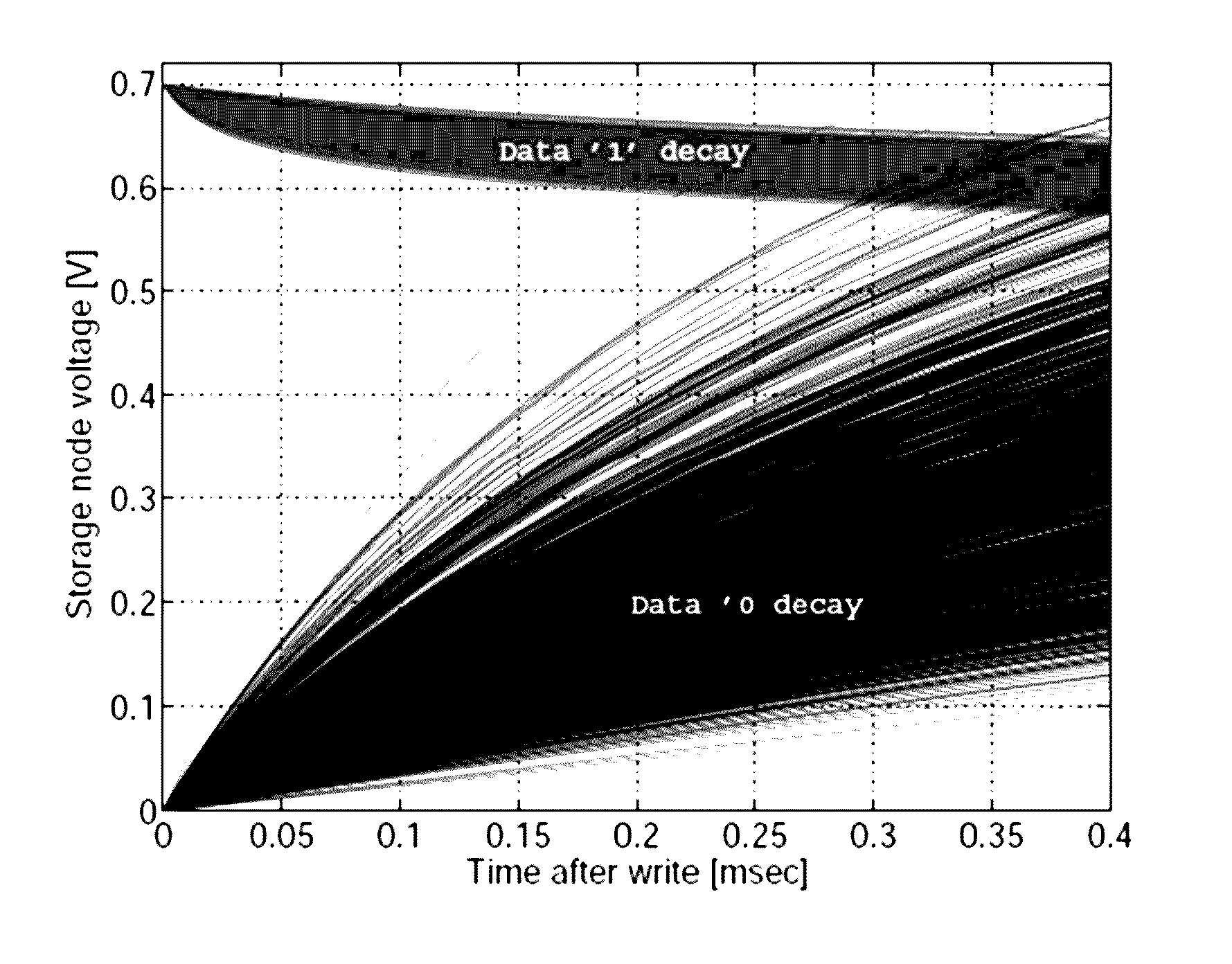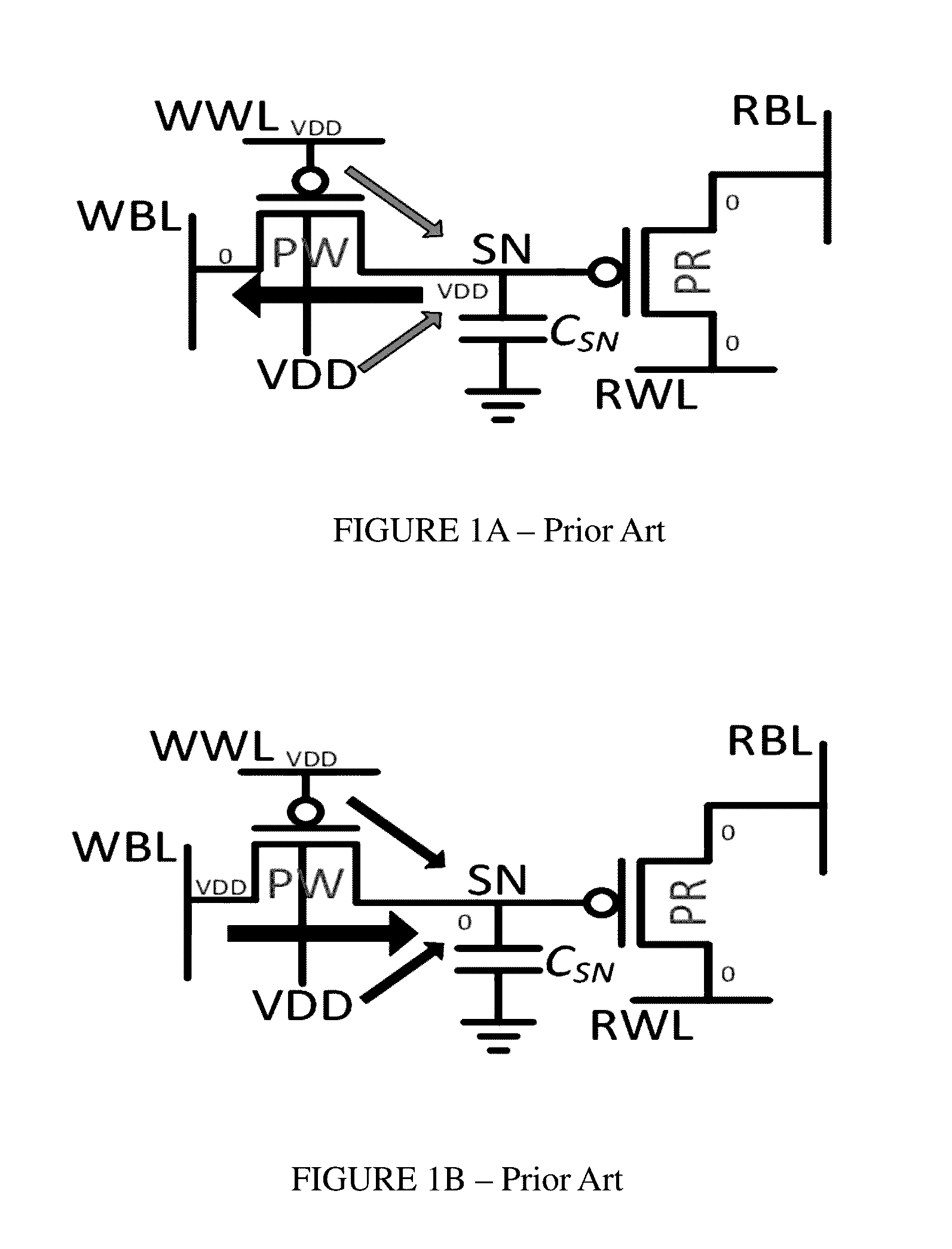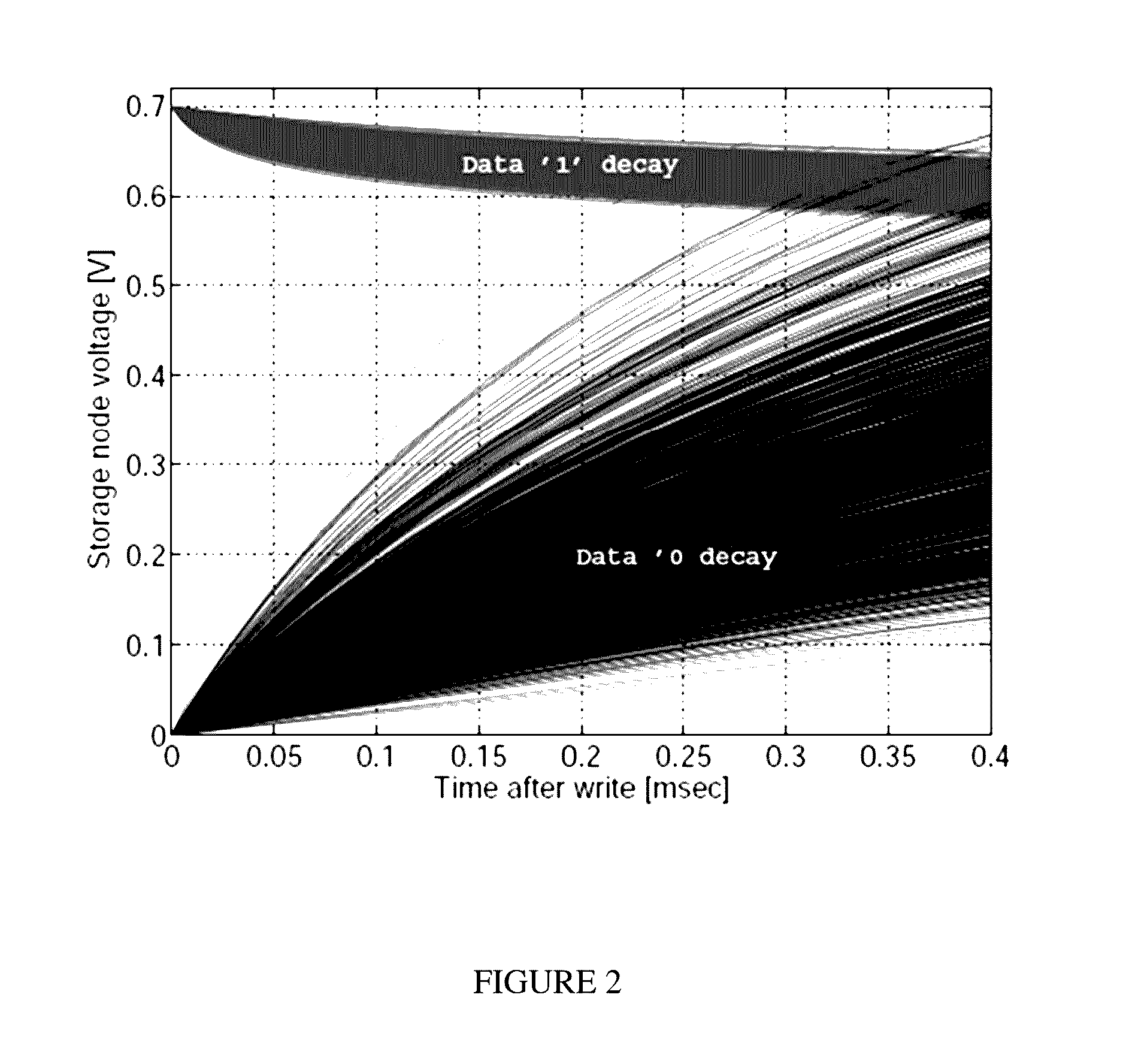Transistor gain cell with feedback
a gain cell and transistor technology, applied in the field of gain cell with internal feedback, can solve the problems of high leakage current, consuming an ever increasing share of the total silicon area, and requiring an increasing amount of embedded memory
- Summary
- Abstract
- Description
- Claims
- Application Information
AI Technical Summary
Benefits of technology
Problems solved by technology
Method used
Image
Examples
examples
[0112]Reference is now made to the following examples, which together with the above descriptions illustrate some embodiments of the invention in a non limiting fashion.
[0113]The simulation results presented below are for a 64×32 bit (2 kb) memory macro based on the 4T PMOS gain cell 500 of FIG. 5. The memory macro was designed in a low-power CMOS 65 nm process. All devices were implemented with standard VT transistors to provide logic process compatibility. The operating voltage was selected to be 700 mV in order to demonstrate compatibility with power-aware (near-threshold) applications.
[0114]Reference is now made to FIG. 10 which is a timing diagram demonstrating 4T PMOS gain cell operation through subsequent write and read operations.
[0115]Initially, a ‘0’ is written to SN by pulsing WWL to a negative voltage (−700 mV), thereby discharging SN through WBL. Next, a read operation is performed by pre-discharging RBL by pulsing the PC control signal (not shown), and subsequently cha...
PUM
 Login to View More
Login to View More Abstract
Description
Claims
Application Information
 Login to View More
Login to View More - R&D
- Intellectual Property
- Life Sciences
- Materials
- Tech Scout
- Unparalleled Data Quality
- Higher Quality Content
- 60% Fewer Hallucinations
Browse by: Latest US Patents, China's latest patents, Technical Efficacy Thesaurus, Application Domain, Technology Topic, Popular Technical Reports.
© 2025 PatSnap. All rights reserved.Legal|Privacy policy|Modern Slavery Act Transparency Statement|Sitemap|About US| Contact US: help@patsnap.com



